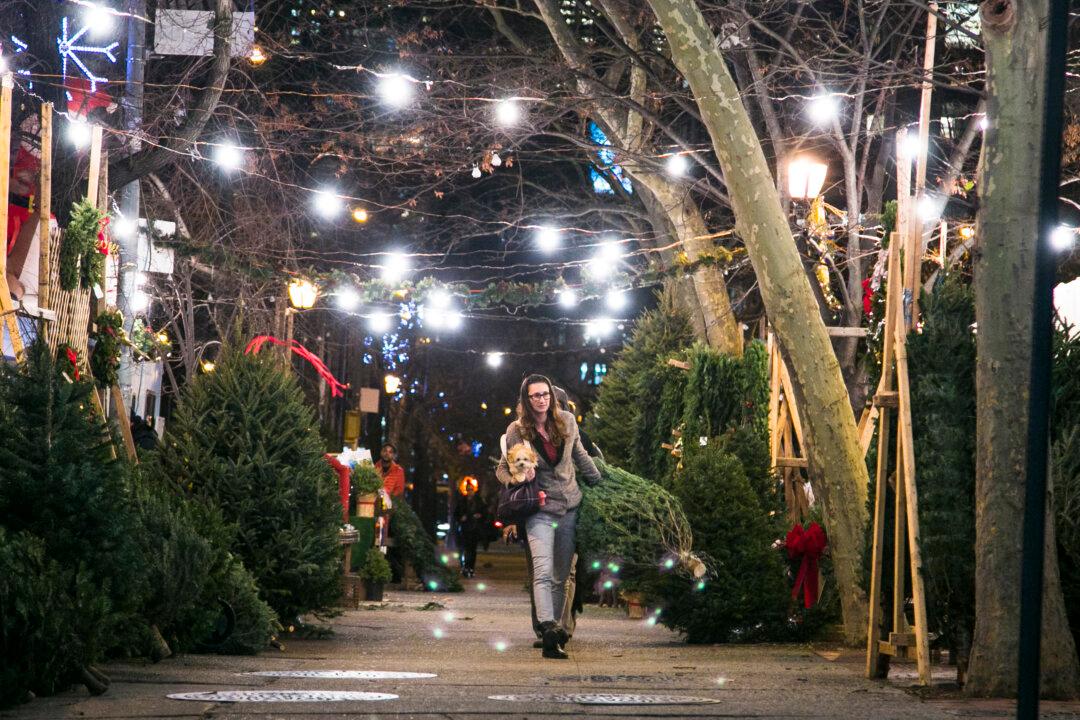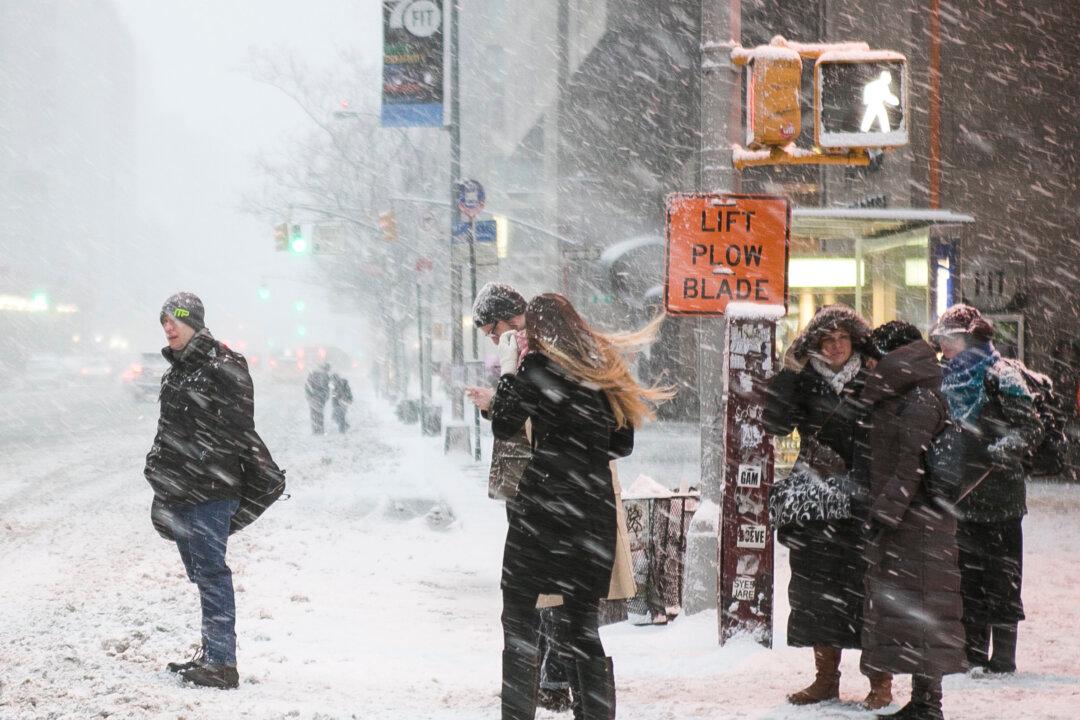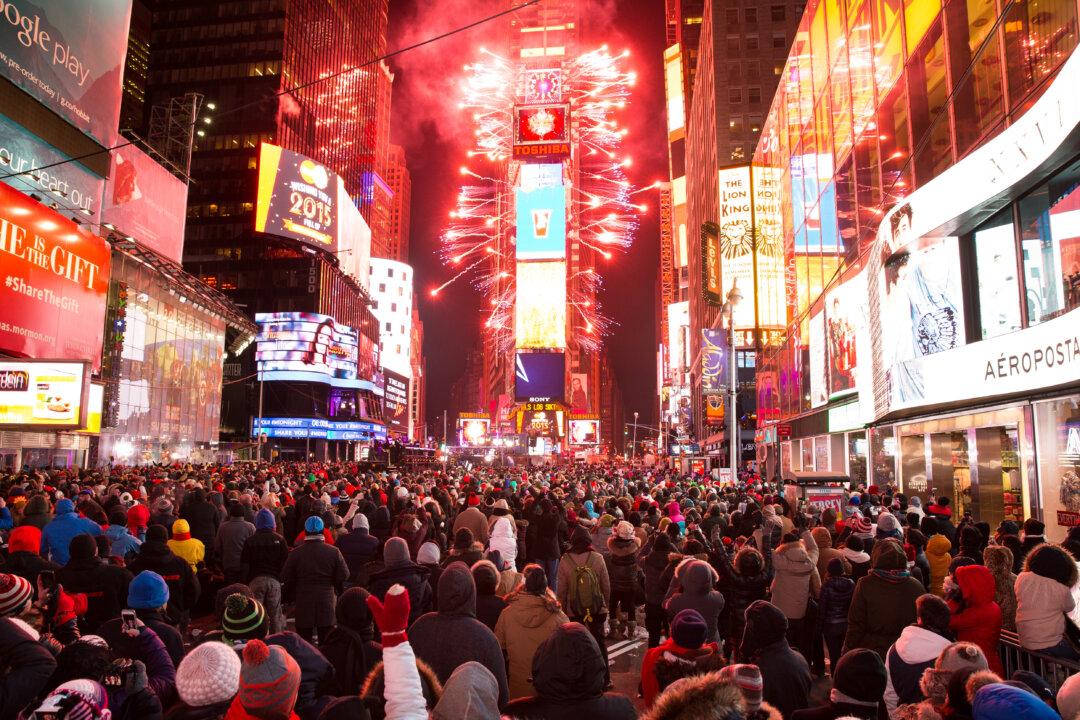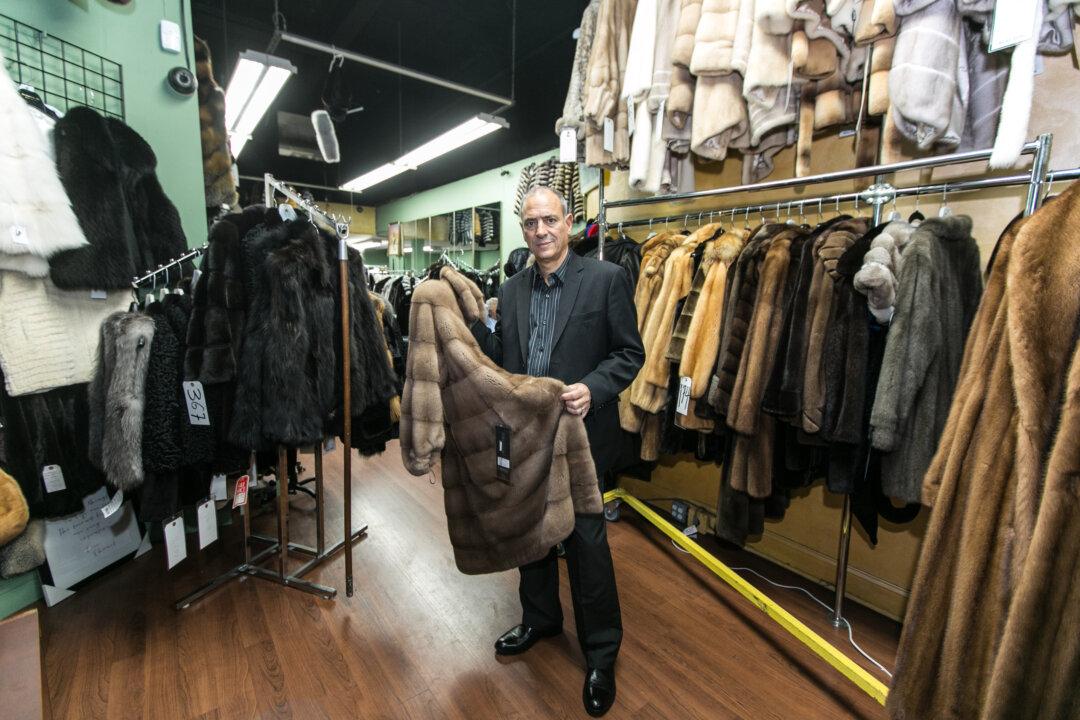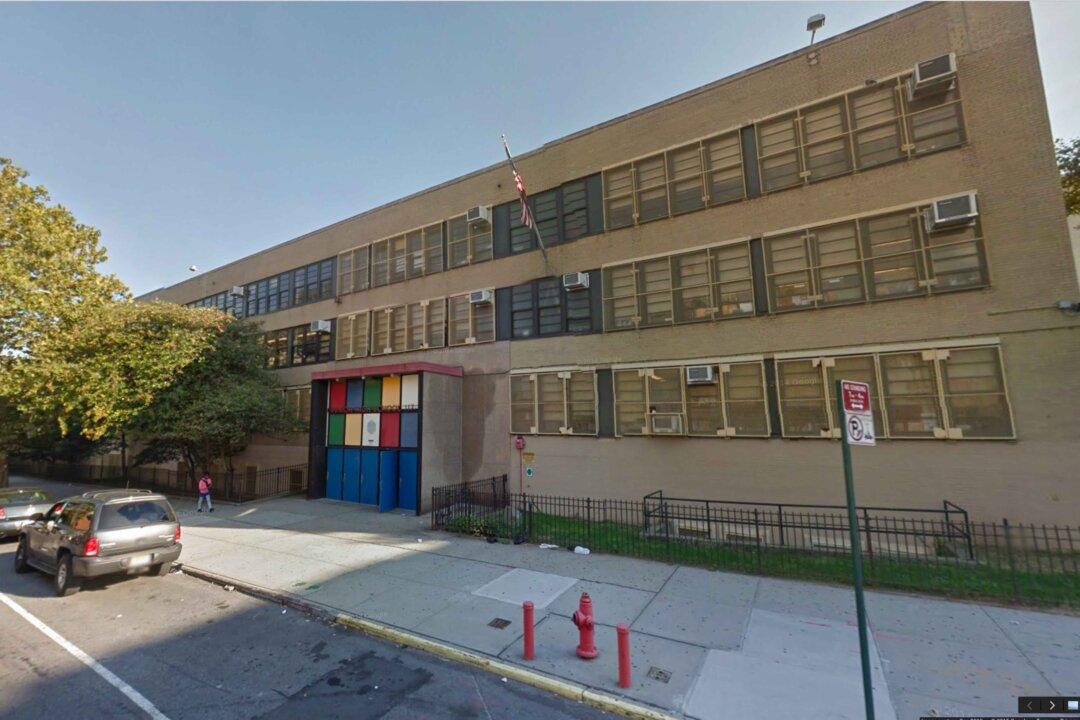At SoHo Square, the smell of clean crisp pine permeates the air, inviting passersby to pause and admire the majestic Christmas trees standing utterly still against the bustling city landscape.
Two young boys laugh as they weave in and out of colorful Christmas decorations tastefully scattered between rows of trees. An enormous inflatable snowman greets them as they run past. Their father points at the trunk of the tree that he’s just chosen and tells the young employee that it needs to be trimmed.
Business is good for Scott Lechner, the owner of SoHo Trees. He has been selling trees in New York for 36 years and runs Christmas tree stands at seven locations.

People walk through the SoHo Trees holiday shop at SoHo Square in Manhattan, New York, on Dec. 15, 2015. Samira Bouaou/Epoch Times
